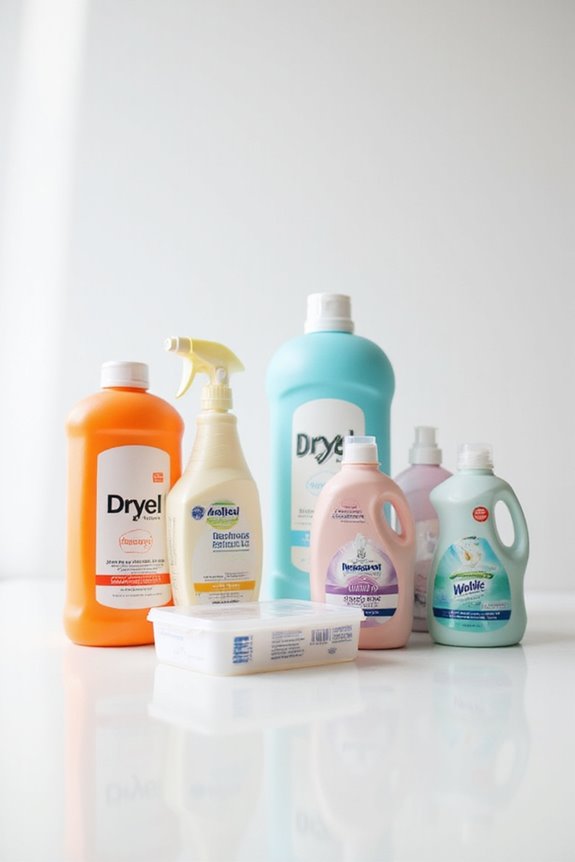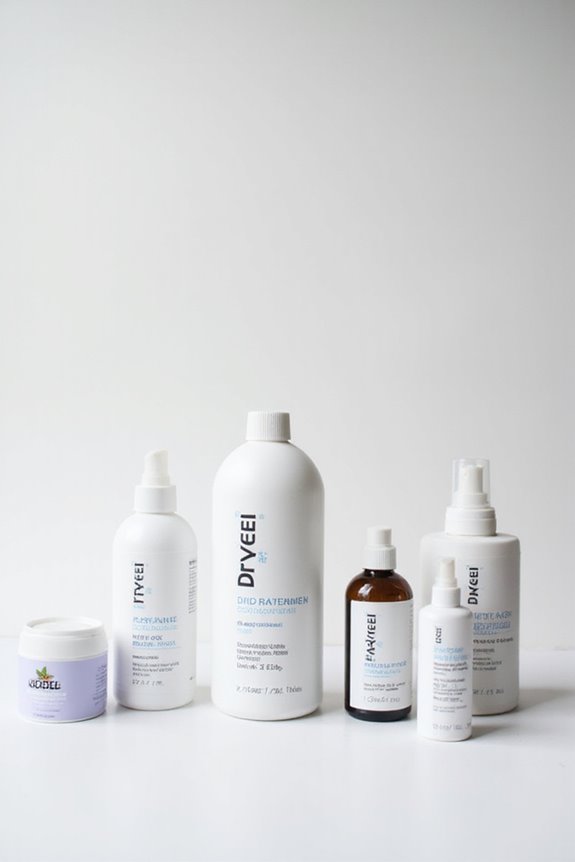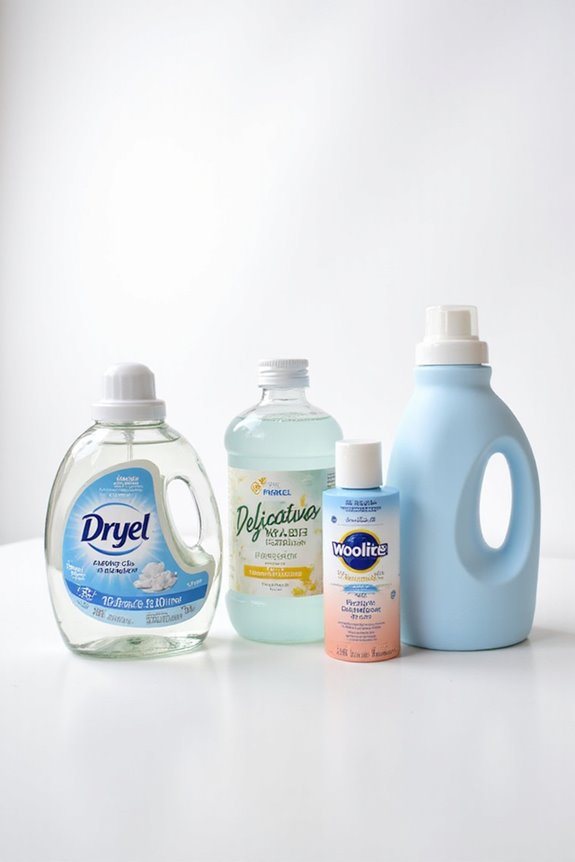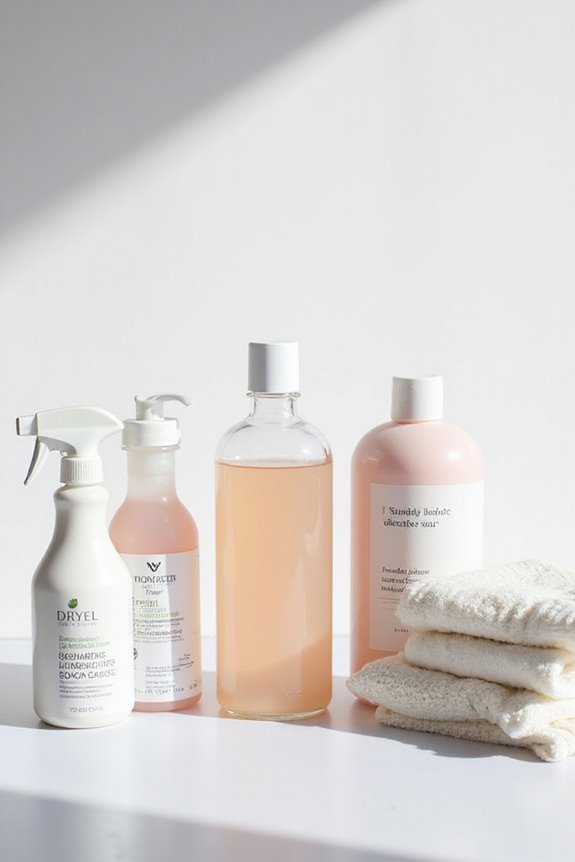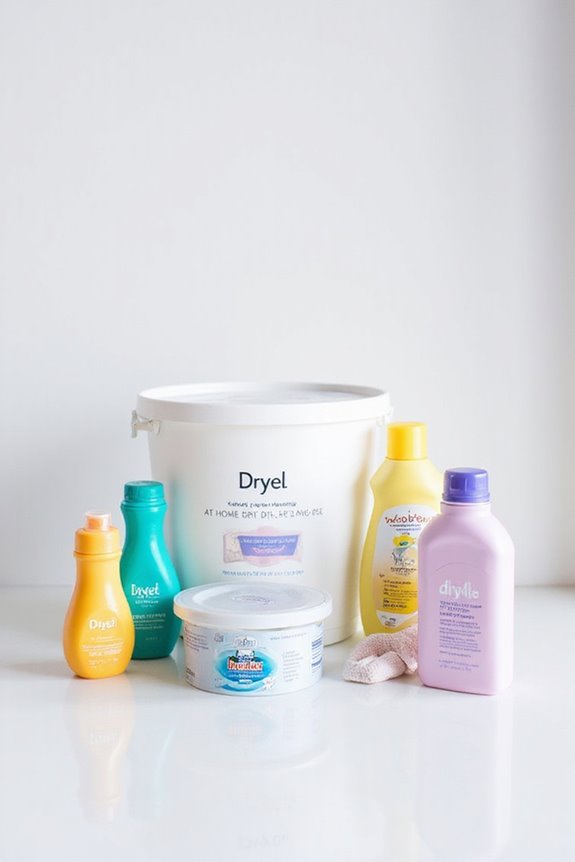Sure, we can safely dry clean at home with the right methods and precautions! First, we should always check care labels for “dry clean only” tags. Gentle detergents work well for most fabrics, but beware of delicate ones like silk. It’s wise to air our cleaned garments outside to avoid chemical fumes. Plus, using kits like Dryel makes it easier—and some even come with reusable bags! Stick around, and we’ll share more tips for a successful home dry cleaning experience!
Key Takeaways
- Always check care labels and fabric types to determine if home dry cleaning is safe for your garments.
- Use home dry cleaning kits that avoid harmful chemicals like PERC for safer cleaning practices.
- Ensure good ventilation while cleaning and air out garments outdoors to minimize harmful vapors.
- Handle cleaned clothes with gloves to prevent chemical skin absorption and avoid immediate enclosure.
- Be aware that home kits may not effectively tackle deep stains or delicate fabrics; test small areas first.
Understanding Home Dry Cleaning Methods
Have you ever wondered how we can take care of our clothes at home without a trip to the dry cleaner? We’ve got some great tips for effective home cleaning and fabric care. First, check the care labels on our garments—if it says “dry clean only,” we should proceed with caution. Using white vinegar and baking soda can work wonders: vinegar deodorizes while baking soda absorbs odors. For gentle cleaning, we can use clean microfiber cloths. After spot testing for colorfastness, we can hand wash delicate items with mild detergent. Once cleaned, hang them to air dry. Finally, storing clothes in breathable garment bags keeps them fresh, avoiding those pesky odors that plastic can trap. Additionally, using at-home dry cleaning kits can provide a convenient and effective solution for maintaining delicate garments. Happy cleaning!
Safety Considerations for Home Dry Cleaning
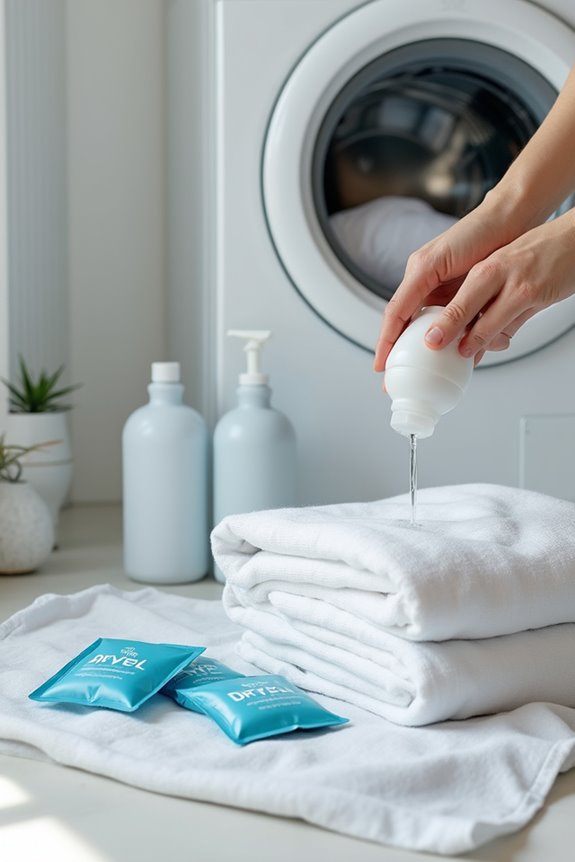
When we’re cleaning our clothes at home, safety should always be at the top of our minds. We need to be cautious about chemical exposure from dry cleaning solvents like perchloroethylene, which can be harmful if inhaled. To minimize risks, let’s air out our freshly cleaned garments outdoors in a well-ventilated space. This helps dissipate any residual solvent vapors. Using gloves while handling these clothes is a smart safety precaution, preventing skin absorption of chemicals. We should also avoid bringing them into enclosed spaces right away. Instead, let’s keep them in breathable containers to avoid trapping any lingering odors. Remember, a little extra care goes a long way in keeping us safe and our clothes looking great! Additionally, utilizing eco-friendly options can help reduce potential health risks associated with traditional dry cleaning solvents.
Identifying Suitable Fabrics for Home Dry Cleaning
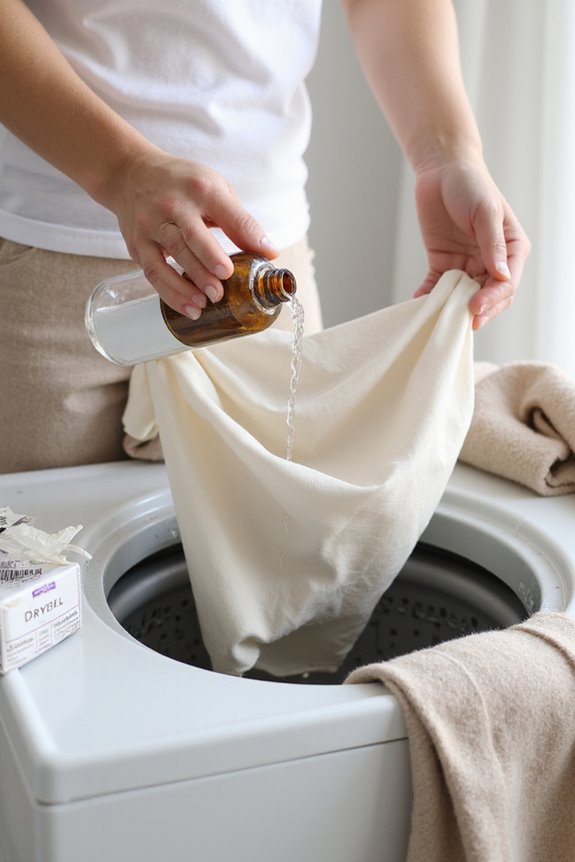
Identifying suitable fabrics for home dry cleaning can be a bit tricky, but it’s super important to get it right. First, we should focus on fabric identification to determine cleaning suitability. Fabrics like silk, wool, and cashmere don’t mix well with water and need gentle treatment. On the other hand, cotton and polyester are our best friends when it comes to home washing.
Let’s keep an eye out for delicate textures, too. Velvet and suede love professional care because they can be easily damaged. If we’re unsure, testing a small, hidden area can save us from disaster. So, before we plunge into the laundry, let’s double-check those labels and make sure our fabrics are ready for the DIY dry-cleaning adventure! Additionally, opting for hypoallergenic and pH-neutral detergents is vital for preserving the integrity of delicate fabrics during the cleaning process.
Environmental and Health Benefits of Home Dry Cleaning
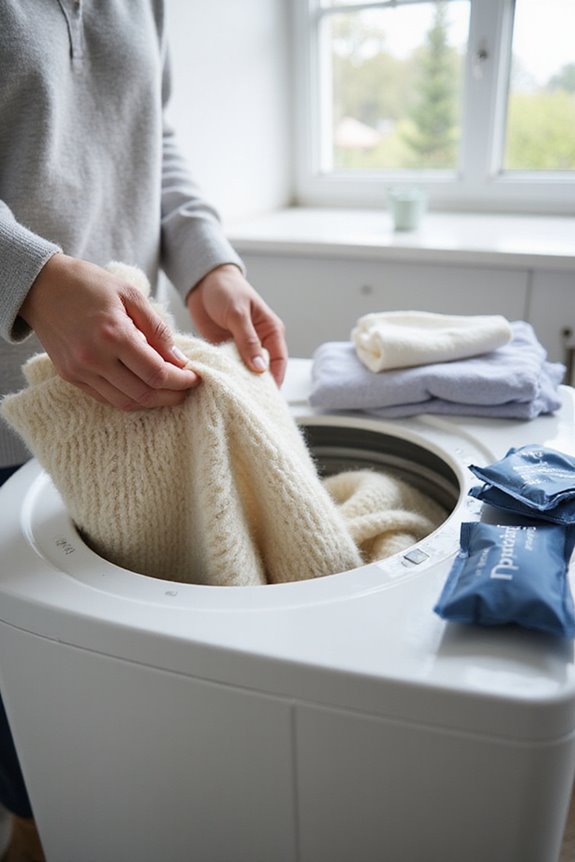
After figuring out which fabrics are suitable for our home dry cleaning adventures, we should also think about the benefits this approach brings to both our health and the environment. By using home dry cleaning kits, we can skip harmful chemicals like PERC, which are common in traditional methods. This means less toxic residue on our clothes and fewer pollutants in our homes. Plus, we’re reducing our carbon footprint since home methods usually use less energy and don’t require trips to dry cleaners. With eco-friendly solutions and sustainable practices, we’re also conserving water and minimizing waste. Additionally, using biodegradable ingredients in laundry products further enhances our commitment to a healthier planet. It’s a win-win! Our community and our health benefit, making our clothes cleaner and our planet a little greener.
Practical Steps for Safe Home Dry Cleaning
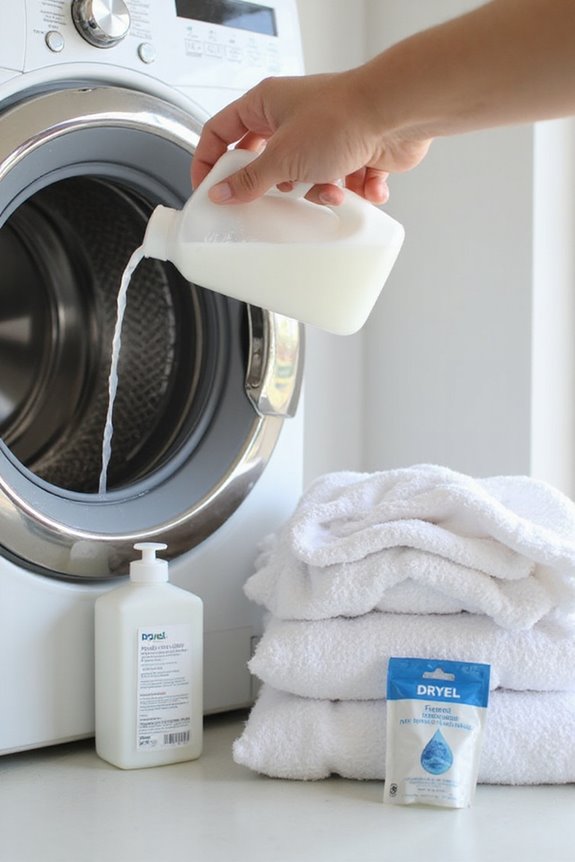
Getting started with home dry cleaning can feel a bit overwhelming, but we can make it easier by following some practical steps. First, we should check the care label—only proceed if it says “dry clean recommended.” Next, let’s perform a spot cleaning test with water and mild detergent on a hidden area, just to be safe. We can also identify which fabrics are suitable; cotton and polyester usually work well, while leather and silk might need a pro. Before we clean, gently remove any surface stains to enhance our results. After cleaning, air our garments outside to reduce any chemical smells. With these steps, we can feel confident about our fabric care and keep our clothes looking great!
Limitations of Home Dry Cleaning
While we’ve covered some practical steps for safe home dry cleaning, it’s important to recognize that these methods come with their own set of limitations. First, home kit limitations can make stain removal challenging. For instance, deep-seated or oil-based stains often remain stubbornly in place. We also run the risk of damaging delicate fabrics, leading to shrinkage or color bleeding. Plus, let’s face it, our DIY pressing skills rarely match those of professionals. And who likes overly perfumed clothes? Not us! Ultimately, some fabrics like velvet or leather aren’t even compatible with these kits. So, while home dry cleaning sounds appealing, it’s not a one-size-fits-all solution for our wardrobe woes. Additionally, using gentle detergents for delicate fabrics can help maintain the integrity of your garments when washing them at home.
When to Opt for Professional Dry Cleaning
Have you ever wondered when it’s time to leave laundry to the professionals? We often think we can handle everything at home, but certain garments need expert care. For suit preservation, delicate fabrics like silk or wool can easily be damaged by water. If we’ve got heavily embellished dresses or tailored pieces, professional dry cleaning is the way to go. They have the right stain treatment techniques for tough spots like ink or oil—things we might just make worse at home. Plus, professionals can guarantee our clothes maintain their shape and crispness, something we might struggle with. So, when in doubt, let’s leave it to the pros for those high-maintenance pieces that deserve extra love! Additionally, using specialized stain removers for sweat stains can help maintain the quality of less delicate fabrics in between professional cleanings.
Testing for Colorfastness Before Cleaning
Ever wondered how to tell if your favorite garment can survive a home cleaning? Testing for colorfastness is key! We can start with the wet cloth test. Just press a damp white cloth on a hidden area of the fabric. If you see color transfer, that’s a warning sign. Next, we can try the vinegar test to check for fabric sensitivity. A little vinegar on a hidden spot can show if the color bleeds. Finally, the rubbing test is a good idea too. By rubbing a white cloth against the fabric, we can see if any loose dyes come off. If any tests show color issues, it might be safer to go for professional cleaning. Not all fabrics are created equal!
The Role of Ventilation in Home Dry Cleaning
When it comes to dry cleaning at home, ventilation plays an essential role in keeping our space safe and fresh. We need to guarantee our ventilation systems are up to the task. Exhaust fans, ideally placed above our dry cleaning machine, help capture vapors effectively. We should aim for at least one air change every ten minutes to keep air quality high. It’s important to maintain airflow, especially when loading or unloading clothes, to prevent any harmful vapors from lingering. Remember, a little planning goes a long way in creating a safe environment. So, let’s keep our air clean while we tackle those stubborn stains, and maybe even avoid turning our home into a dry cleaning science lab!
Choosing the Right Home Dry Cleaning Kit
Choosing the right home dry cleaning kit can feel overwhelming, especially with all the options out there. We’ve got kits like Dryel and Woolite, which come with reusable bags and stain removers. When we compare kits, it’s important to look at user experiences; some folks swear by the steam technology that gently cleans without harsh chemicals. Remember, these kits work best for light stains and revitalizing fabrics like wool and cotton, not for deep cleaning. Also, eco-friendly options are available for the environmentally conscious. So, let’s check those labels carefully, and maybe even test a stain remover on a hidden area first. After all, we want our clothes looking good without risking damage!
Frequently Asked Questions
Can I Use Home Dry Cleaning on Vintage Garments?
Did you know 80% of vintage fabrics need special care? When considering home cleaning methods for vintage garments, we should be cautious—delicate materials often require professional attention to avoid damage and preserve their beauty.
How Often Can I Use Home Dry Cleaning Kits?
We should follow frequency guidelines, using home dry cleaning kits about once or twice each season. This guarantees the kit’s effectiveness while preventing fabric damage, keeping our clothes looking fresh without overusing the system.
What if My Garment Shrinks After Home Dry Cleaning?
If our garment experiences a little shrinkage after home dry cleaning, let’s gently reshape it, air dry, and consult a professional. Remember, fabric care and shrink prevention are our best allies for future endeavors!
Are There Natural Alternatives to Commercial Dry Cleaning Kits?
We can explore natural solutions and eco-friendly options, like enzyme-free surfactants and gentle shampoos for delicate fabrics. These alternatives not only protect our clothes but also benefit the environment while saving us money.
What Types of Stains Are Hardest to Remove at Home?
When it comes to stains, think of ink and grease as stubborn ghosts that haunt our fabrics. Ink stains cling like shadows, while grease stains slip away, resisting our best efforts for removal.

